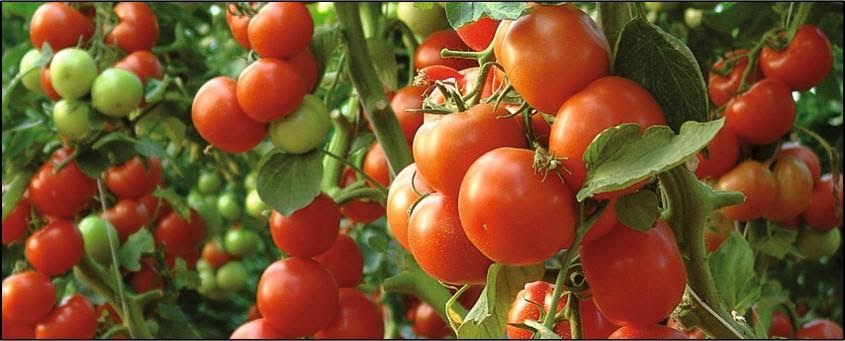If you want to begin the tomato cultivation business? Tomato is one of the most essential and highest grown food crops in the world. However, this is a warm-season vegetable. Therefore, a tomato plant container with stands frost and rain. The Tomato is botanically identified as Lycopersicum Esculentum, which refers to the family Solanaceae.
Tomato ranks third in choice for farmers after Potato and Onion in India but ranks second after potato in the world. India ranks second in the state as well as in the creation of Tomato. Tomatoes are commonly used in three ways. One is in the fresh salad as fresh, cooked food ingredients and processed tomato products like sauce, juice, puree, ketchup, etc.
Commercial tomato farming can be done in free land and greenhouses. The most significant thing is you can improve tomatoes even on a small piece of land. And that will also give you a considerable profit.
Proper soils For Tomato Cultivation
The tomato plants on practically all soils, from light sandy to heavy clay. Tomatoes do great in soil that has a soil response from pH 6.0 to 7.0. Soft soils are suitable for an early crop, while clay loam and silt loam soils are well suited for heavy yields. Most absolute is soil with more sand in the cover layer and clay in the subsurface layers.
Best Varieties For Tomato Cultivation
The best worldwide varieties are Azoychka, Adoration, Alicante, Better Boy, Beefsteak, Blaby Special, Black Krim, Big Rainbow, Cherokee Purple Garden Peach, Campari, Celebrity, Early Girl, Green Zebra, Great White etc.
Agro-Climatic Condition For Tomato Cultivation
The tomato crop is grown during the winter and summer seasons. Temperature and light energy affect the fruit-set, pigmentation, and nutritional value of the fruits. It starts well under a normal monthly temperature range of 21 0 -23 0 C. Still, and commercially it may be produced at temperatures ranging from 18 0 C to 27 0 C.
Land preparation for Tomato Farming
You must develop the land to a fine tilth by thorough ploughing or digging 2 – 3 times. Then, at last, apply plough organic fertilizer.
Transplanting
The transplanting is done in short flatbeds or shallow furrows, depending upon the availability of watering. In heavy soil, it is usually removed on ridges, and when it rains, it is also helpful to plant the seedlings on cliffs.
Irrigation
Tomato plants need adequate moisture throughout their maturity period. Drip irrigation is most suitable to maintain a constant moisture supply. You will need to arrange the first watering soon after the seedlings are removed. Daily watering is necessary when plants are small.
Weed Control
You can use intercultural works like hand hoeing, weeding, mulching and staking as general systems to manage weeds.
Harvesting & Storage For Tomato Farming
The maturity of tomato plants is reached after 8-12 weeks of planting. The yield of a tomato depends on quality and season, which varies from 20 to 24 t/ha. Quality features such as flavour, texture, and colour are better maintained when the fruit is harvested at an earlier stage of maturity. For harvesting purposes, the New Holland 3630 tractor model is good and gives maximum productivity. Along with this, the New Holland 3630 price is available in the market at a reasonable range.
Tomato Cultivation Export Opportunity
Organic tomatoes also have a tremendous demand in both the domestic and international markets. For export, you must enhance the quality of tomatoes and bring them to international standards in production and presentation, packing, etc.
Some of the essential documents required for tomato export are Invoice, Packing List, Certificate of origin, Shipping Bill, Bill of handling, Airway Bill, Letter of Credit, etc. As a result, you can expect a Benefit-Cost ratio: 6.5 from your tomato cultivation business. For the exportation of fruits by tractor John Deere 5310 tractor model is best.
Things regarding Tomato Farming Marketing
Commercial tomato farming is a profitable vegetable business. However, to secure profit maximization from the product, you must keep some basics.
- Variety choice plays a significant role in the success of a tomato cultivation business. But, first, you must select the right one that fits the other climatic and soil conditions.
- You must start the plantation at the right time of the season.
- You will need to support excellent plantation and crop management practices.
- The proper soil condition enhances the per Ha production output. Therefore, soil testing and treatment is recommended.
- You must arrange adequate watering for tomato cultivation.
- Insufficient fertilization and insect management are needed.
- In addition, you must provide for any disease management.
We hope you get this blog informative. And for more related content, stay connected with us. Please wait for our next blog.



